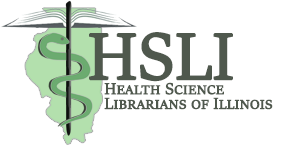Last month, the National Library of Medicine released its long-term strategic plan. The plan, which the NLM developed under the guidance of the National Institutes of Health, acknowledges the Library’s ongoing role as a leader in providing health information, while focusing on the Library’s need to continue adapting to changes in the health and medical fields. In particular, the NLM will need to develop tools and strategies that navigate digital data, while also meeting the research needs of a medical profession that is becoming increasingly interdisciplinary. The NLM must ensure that these new technologies for accessing and organizing data benefit all of the Library’s stakeholders–health and medical professionals, researchers, the general public, government organizations, and private industry, both in the United States and around the world.
To this end, the planning committee included six main goals, each accompanied by several sub-goals.
Recommendation #1: NLM must continue to adapt its resources and services so that it remains at the forefront of making biomedical research findings and accurate health information available.
- The NLM needs to collaborate with related institutions in the U.S. and around the world so that medical and health information can be gathered and analyzed accurately, and distributed as broadly as possible.
- The Library should work to integrate its databases and search engines with similar online resources, so that information can be retrieved as efficiently as possible.
Recommendation #2: The NLM should encourage transparency in the scientific research process, including sharing findings and ensuring that the information produced is accurate.
- Scientific information should be viewed as a “public good”, something that is for the benefit of the individual health consumer or researcher, rather than private industry.
- The NLM should develop best practices and ethical standards for making as much information as possible available via open-source databases.
Recommendation #3: NLM should be the focal point for data science (the analysis of data via various disciplines, including statistics and computer science) at the National Institutes of Health, including its satellite locations.
- The NLM should take a “big-data” approach to organizing and managing the vast and varied amounts of data produced by the NIH. Such a strategy includes representing large amounts of information visually, to make it easier to comprehend.
- The Library should foster leadership and innovation in data science, particularly as it relates to areas that are vital to the mission of NIH.
Recommendation #4: The NLM will play a key role in training and educating future professionals in biomedical informatics, data science, library science, and related areas.
- The Library will develop a multidisciplinary curriculum that familiarizes library-science students with health resources, while also providing necessary database training to various healthcare workers.
- To enhance training and research methods, NLM will work to create partnerships not just within the NIH, but also with other federal agencies and outside institutions that focus on data science and related fields.
Recommendation #5: NLM will take the lead in preserving biomedical research, ensuring that efforts to advance scientific knowledge are available to future generations.
- Through collaboration with other institutions, the NLM will ensure that best practices are followed in archiving, searching, and analyzing information.
- NLM should create a strategy that will allow medical information in all formats, including non-permanent ones (such as databases and blogs), to be captured and preserved.
Recommendation #6: Fresh leadership at the NLM should evaluate if the Library currently has the staffing and resources to achieve its mission as fully as possible.
- The new director of the NLM should thoroughly evaluate all facets of the organization to determine which of its resources are most suitable for accomplishing the goals outlined in the plan.
- If necessary, NLM administrators should restructure the organization, so that the strategic goals can be reached as quickly and efficiently as possible.
To read the full report, go here.
